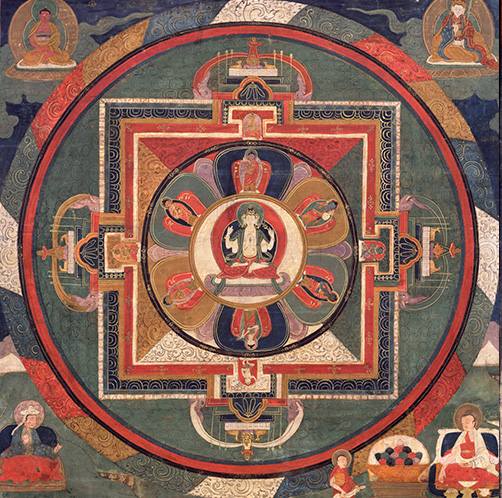
Theme: Reflection
All learning requires both action and reflection. Inspired by the bodhisattva Avalokiteshvara’s vow to end suffering, Kate Johnson examines how reflective practices help foster our most enlightened selves.
About the Meditation
Meditation session led by Kate Johnson. The guided meditation begins at 15:00.
For centuries Himalayan practitioners have used meditation to quiet the mind, open the heart, calm the nervous system, and increase focus. Now Western scientists, business leaders, and the secular world have embraced meditation as a vital tool for brain health.
Whether you’re a beginner, a dabbler, or a skilled meditator seeking the company of others, join expert teachers in a forty-five-minute weekly program designed to fit into your lunch break. Each session will be inspired by a different work of art from the Rubin Museum’s collection and will include an opening talk, a twenty-minute sitting session, and a closing discussion. Chairs will be provided.
This program is presented in partnership with Sharon Salzberg, the Interdependence Project, and Parabola Magazine.


RELATED ARTWORK

The bodhisattva Avalokiteshvara is shown here with four arms in the universe that is his abode, his mandala.
This mandala shows Avalokiteshvara surrounded by the buddhas of the six realms. Avalokiteshvara emanates in these buddha forms in order to enter the six realms of the world and bring enlightenment and benefits to all six types of living beings.
Protected by a circle of five-colored flames, the inner palace is marked by four T-shaped gates; inside each gate is a seated female guardian. The inner square of the palace is divided into four colored triangles associated with the four directions of space.
In six lotus-shaped petals arrayed around Avalokiteshvara are the buddhas who minister to beings in the six realms of existence. Above Avalokiteshvara’s head is the Buddha Shakyamuni, responsible for the human realm. Moving clockwise, from the top of Avalokiteshvara’s head, the green buddha attends to the jealous titans, the blue buddha nurtures animals, the buddha holding a lute is found in the realm of the gods, and the brown buddha saves beings in the realm of the craving souls.
Each part of the image is used by the practitioner as a memory aid (an element of reflection) to call forth teachings and instructions for action intended to cut through the ignorance, passion, and aggression that drive the cycles of samsara and rebirth.
About the Speaker

Kate Johnson works at the intersections of spiritual practice, social action, and creativity. She has been practicing Buddhist meditation in the Western Insight/Theravada tradition since her early twenties and is empowered to teach through Spirit Rock Meditation Center. She holds a BFA in dance from the Alvin Ailey School/Fordham University, and MA in performance studies from NYU.
Kate is a core faculty member of MIT’s Presencing Institute, and has trained hundreds of leaders and change-makers in using Social Presencing Theater, a mindfulness and dance improvisation methodology used to inform strategic planning and systems change in our complex world.
